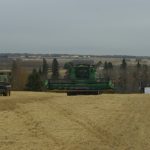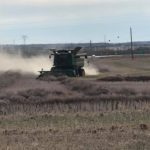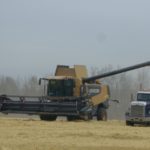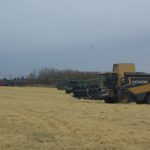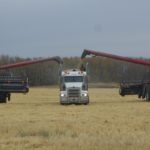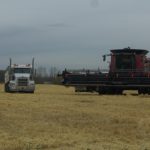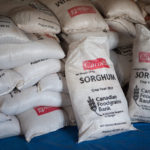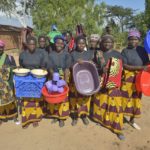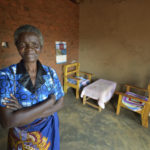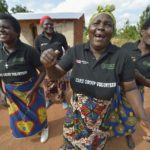
What does the Canadian Foodgrains Bank do? The goal of the Foodgrains Bank is to end global hunger. We do this in the following ways:
- We provide emergency food for people who are hungry because of things like war, drought, and unfair international trade policies.
- We provide tools and training so that hungry people, many of whom are small-scale farmers, can feed themselves.
- We support programs that improve nutrition, especially for children and nursing mothers, and that provide nutrition education and training for families. We also work to end global hunger through education and advocacy.
- We work to influence national and international policies that contribute to ending global hunger.
- We engage and educate Canadians in efforts to end global hunger.
Canadian Foodgrains Bank and the Government of Canada: Canadian Foodgrains Bank is grateful to partner with the Canadian Government to provide food assistance to people in the developing world. The Government of Canada has supported the Foodgrains Bank since it began in 1983. Today, the Canadian Foodgrains Bank is one of two primary channels for the Government of Canada’s funding for food assistance. Through the Government of Canada’s support, the Foodgrains Bank’s 15 members are able to leverage donations on a four-to-one basis for food assistance in the developing world up to $25 million. “We are very grateful to the Government of Canada for its generous support through Global Affairs Canada,” says Foodgrains Bank Executive Director Jim Cornelius.
- ADRA Canada (Adventist Development & Relief Agency)
- Canadian Baptist Ministries
- Canadian Catholic Organization for Development & Peace
- Canadian Lutheran World Relief
- Christian & Missionary Alliance
- Emergency Relief & Development Overseas (Pentecostal Assemblies of Canada)
- Evangelical Missionary Church of Canada
- Mennonite Central Committee
- Nazarene Compassionate Ministries
- Presbyterian World Service & Development (PWS&D)
- Primate’s World Relief & Development & Development Fund (Anglican Church of Canada)
- The Salvation Army
- The United Church of Canada
- Tearfund Canada
Today, around 10 families continue to support the growing project in Eckville. For Ron Hopper, the growing project leader, being able to support the effor t to end global hunger is encouraging.
“It gives the community a real sense of inspiration,” says Hopper. “And pride that we can do it year after year.”
In 2006, Hopper went to Ethiopia and Kenya on a food study tour to see first hand how Foodgrains Bank supported projects are making a difference for those who are hungry overseas. “Once you actually walk in the villages and you break bread with them and go to church services with some of the recipients, you see first hand the impact it has on their lives,” says Hopper.
Hopper also remembers meeting officials who worked for the United Nation’s Food and Agriculture Organization on the tour.
“They were just amazed that farmers in little prairie towns in Canada would band together to support the Foodgrains Bank like they did,” says Hopper.
“I think they wondered, ‘Okay, so why would a farmer from Eckville, Alberta, care about what happens in Ethiopia?’” he adds. “It was a real eye opener for them that a lot of farmers from across the entire country supported
these projects so much.”
Since its inception, the St. Paul’s Presbyterian Church Growing Project has raised nearly $240,000 for PWS&D’s work through CFGB. When matched by Global Affairs Canada, that would be over a million dollars worth of aid for hungry people.
“Our community just really sees the value of the mission work and the food going to help people out in countries where they need it,” says Hopper. “They’re just really invested in helping somebody else out.”
The commitment St. Paul’s shows for ending hunger is mirrored in Presbyterian congregations across Canada. Over the
past 25 years, Canadian Presbyterians have donated over $4 million to help alleviate suffering overseas through PWS&D, allocating over $270,000 in 2016–17 alone.
For Guy Smagghe, director of PWS&D, the generosity of Presbyterians across Canada, coupled with the hunger focused nature of the Foodgrains Bank, allows for a more just world.
“Witnessing the passionate support PWS&D supporters have for ending global hunger is inspiring,” says Smagghe. “Together, PWS&D, Canadian Presbyterians and the Foodgrains Bank are helping alleviate suffering for millions of people.”



